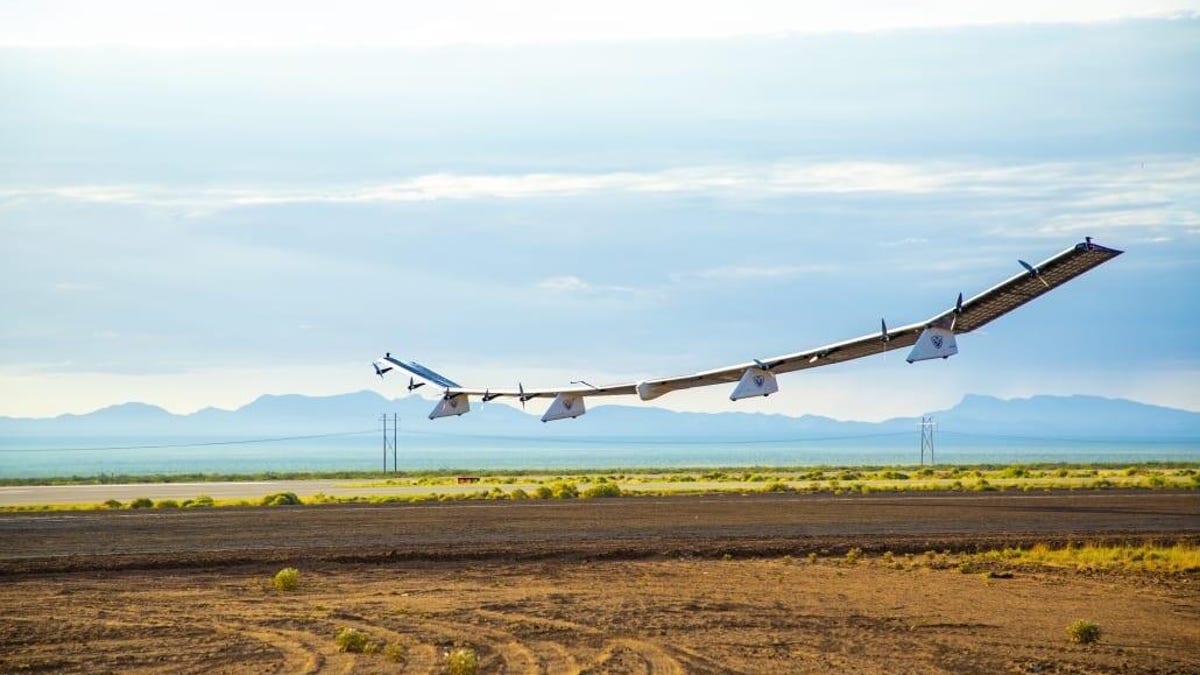This massive drone beamed broadband from the sky in a key test
The solar-powered Sunglider hosted video calls using network equipment from Loon, the balloon broadband company from Alphabet.

A HAPS Mobile broadband drone in flight
Facebook may have scrapped its Aquila project to beam broadband internet access down from high-altitude drones , but a Japanese venture called HAPSMobile has reported success in testing similar technology. The company lofted a giant solar-powered wing called Sunglider up to an altitude of 62,500 feet for a 20-hour data-beaming test flight in the stratosphere above New Mexico on Wednesday.
Using mobile network technology from Loon, the balloon-based internet access effort from Google parent company Alphabet, the 262-foot-wide aircraft hosted video calls with internet pioneer Vint Cerf, among others. It also withstood strong winds, HAPSMobile said Thursday.
It's the latest example of how self-piloting, unmanned aircraft can potentially change many industries. Startups and established companies are developing drones to fight wars, deliver packages, monitor wildfires and deliver broadband internet access, among other tasks.
HAPSMobile is majority-owned by Japanese technology and investment firm SoftBank, but a minority stake is from drone maker AeroVironment. Also involved is the HAPS Alliance with Google, an effort to promote the high-altitude pseudo-satellite, or HAPS, technology, to secure radio spectrum globally, to fit into the airspace without causing problems and to make sure HAPS networks work well together.
The Sunglider is propelled by 10 electric motors and is designed to fly for months at a time. It can carry up to 150 pounds of payload. At elevations above 60,000 feet, or 11.3 miles, it's flying above conventional aircraft and most clouds.
The test took place at Spaceport America near the US Army's White Sands Missile Range in southern New Mexico, where the HAPSMobile team conducted a test flight in June.
HAPSMobile's solar-powered broadband drone has spent hours in the stratosphere.

